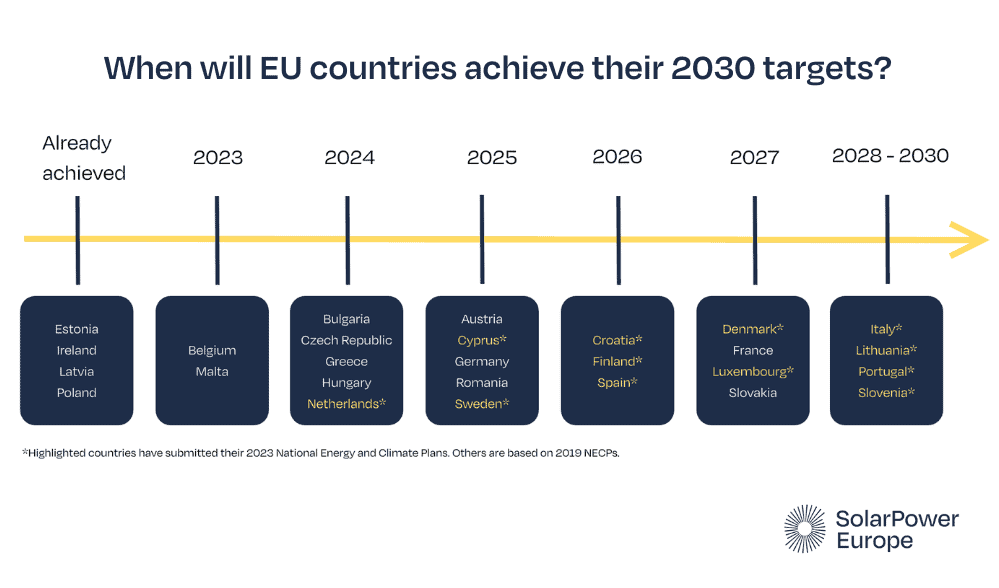The European Union is moving fast on deploying solar power in response to the energy crisis, with ambitious targets that countries are now starting to roll out. A new report by the lobby group SolarPower Europe found the bloc would have over 400 GW of solar power installed by the end of the decade — almost double the 208 GW of solar power produced today.

In 2019, the EU asked member countries to publish and implement 10-year National Energy and Climate Plans. Running from 2021 to 2030, these are meant to lay out each country’s targets, policies, and measures that will enable the country to reach the 2030 EU renewable target — having an energy matrix with 32% renewable energy.
By June this year, countries were supposed to submit a draft update of their plans or justify that the current plan remains valid. As of August, only 12 have been received and published, and 15 are outstanding. However, the ones that are published are very positive and ambitious, according to an initial analysis done by SolarPower Europe.
On average, the new targets for solar power are 63% more ambitious, with Lithuania increasing its solar ambition by 500%. Finland, Portugal, Slovenia, and Sweden more than doubled their previous targets and Spain increased its target by 94%. Considering the recent targets, four countries have already met their solar targets for 2030 and 19 others will do so in the next five years.

Raffaele Rossi, Head of Market Intelligence at SolarPower Europe, said the way governments think about solar “has definitively changed.” However, he warned there’s still a long way to go. “Grid operators, citizens, businesses, and energy providers all need to be able to prepare for the reality of a solar and renewable-based energy system,” Rossi added.
A group of European renewable associations wrote a letter to the EU Commission earlier this month warning that due to a lack of flexibility in the grid, solar plants are sometimes asked to shut down when there’s low demand. Speaking with Politico, Rossi also warned there’s a challenge and an opportunity in fixing the grid and training workers in the solar sector.
Solar’s fast pace around the world
Solar remains the most economically viable choice for new electricity generation in many countries around the globe, despite the current increase in investment expenses caused by elevated commodity prices. Moreover, the distributed solar PV sector, exemplified by rooftop solar installations on buildings, is poised for rapid expansion.
According to the International Energy Agency, solar generation on a global scale increased 26% last year, reaching 1.3 terawatts. It had the largest absolute generation growth of all renewable technologies last year, surpassing wind. In Europe, solar expanded by 38 gigawatts last year — a 50% increase compared to 2021.
The EU has responded to the energy crisis amid the Ukraine war with new policies and targets to expand solar investment in the coming years. The RePowerEU Plan seeks to increase the share of renewables and boost energy efficiency, while the Green Deal Industry Plan wants to improve the manufacturing capacity for renewable technology in Europe.






